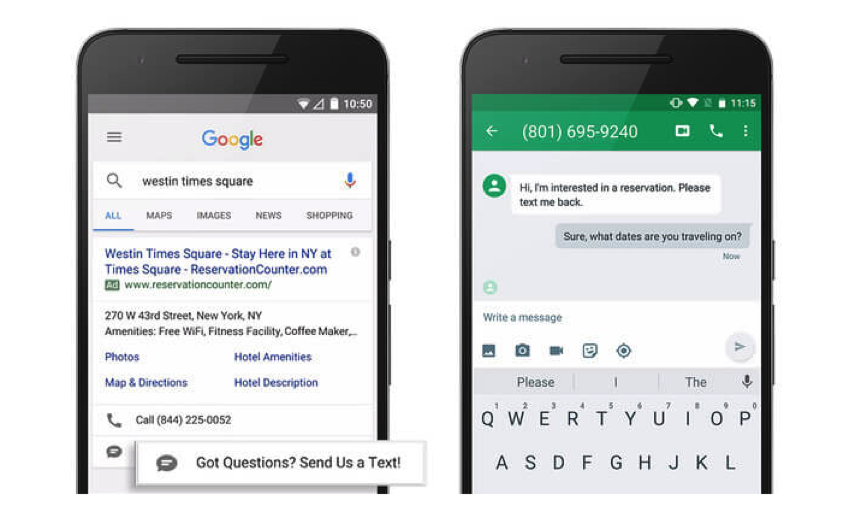“You can have data without information, but you cannot have information without data.” (Daniel Keys Moran, computer programmer.)
All by myself on Tuesday morning, I wished I was not alone at my desk because when “message reporting” hits your brain just as you were thinking of all the recent enquiries received about bot budgeting, the most plausible take is that Google knows exactly what it is doing.
But do you?
2016
Some background should help you understand what is going on here.
On 18 October 2016, Google introduced click-to-message ads, which were launched to meet a specific demand in some of its core markets as “65% of consumers consider using messaging to connect with a business to complete tasks like getting information about a product or service, or to schedule an in-person appointment.” (The full story can be found here.)

Today
Almost two years later, message reporting “will roll out over the next few weeks in the U.S., Canada, U.K., France, Brazil and Australia,” Google announced this week.
Message reporting, it said, will include the following metrics:
- Chat rate: after seeing the message extension, how often users start a conversation with the chat.
- Chat start time: the timestamp for when a user sends you a message to initiate a conversation.
- Messages: the total number of messages exchanged between you and a user within a single chat.
The read-across for chatbots, and how these key metrics could apply, follows:
- “Chat rate”: content should be optimised not only to be relevant, but also engaging and valuable for customers. The chat rate will therefore assume the same importance of the click-through-rate (CTR) for text ads, generating more options to potential new formats within the message itself. Yes, this applies to chatbots.
- “Chat start time”: understanding when the user initiates a conversation essentially makes it possible to assess and better define the messaging schedule, with obvious benefits as far as gauging users behaviour throughout time is concerned, as well as for budget allocation (which would be based on data intelligence rather than weak assumptions). Yes, you need to consider this for your chatbot, too.
- “Messages”: As with a site interaction, where the number of steps (=pages/actions) are analysed in the user journey – the number of messages will help to identify the critical points and areas for improvements (again mainly through content) which will require optimisation.
There you go, I might be in good company now.
If you wish to know more about Hedging Beta services, including Chatbots, SEO, GDPR and more, please get in touch with our team at info@hedgingbeta.com.
(This post was written by Laura Pasetti. Laura is the co- founder and CEO of Hedging Beta Ltd. Laura has spearheaded international teams in Barcelona and London for several years, focussing on the financial, insurance and travel sectors before contributing to the launch of Hedging Beta in 2015.)
